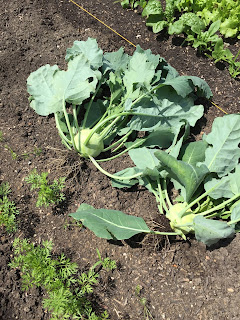
Gardening, whether it is for vegetables or flowers, takes patience and persistence. Patience because it can take so long for flowers to bloom and vegetables to mature to that perfect stage for harvesting. Persistence because weeds, insects and animals are constantly attacking and trying to stop your best efforts in the garden.
Many years ago we planted some Foxglove in the perennial flower garden. As I did the Fall clean up in the perennial garden, I thought the Foxglove really embody the concepts of patience and persistence in the garden.
The picture above is a great example of what Foxglove look like when flowering. I wish I could say this was from my garden this summer but I can't. This is a Google image I found to show you what Foxglove look like when flowering.
Foxglove is a biennial flower that grow two to five feet tall and love lots of sun. You will often see them in purple, white and pink. Foxglove bloom in early to mid summer.
So, why do I think Foxglove are both patient and persistent? The answer lies in the fact that they are a biennial flower that are toxic to animals and small children. A biennial flower is not an annual or a perennial, but right in between. A biennial is a plant that completes its growing cycle over two years. The first year the plant consists of only green foliage. The second year is the payoff with the plant flowers and setting seed. Waiting two years for flowers on a plant takes patience for most people. The great thing about Foxglove is that if you let the flower go to seed it will naturally distribute the seed all over your garden and the two year cycle starts all over again with no work. The other crazy fact about Foxglove that make them persistent is that all parts of the plant are poisonous. Great care should be taken with young children and pets around Foxglove. If consumed, Foxglove will cause the person or animal's heart to slow down or beat irregularly. No wonder the rabbits and deer left all my Foxglove plants alone this year but happily ate all my other plants.
 |
 |
And that is why I think Foxglove are the perfect example of patience and persistence in your garden.
 ;
; ;
;








































